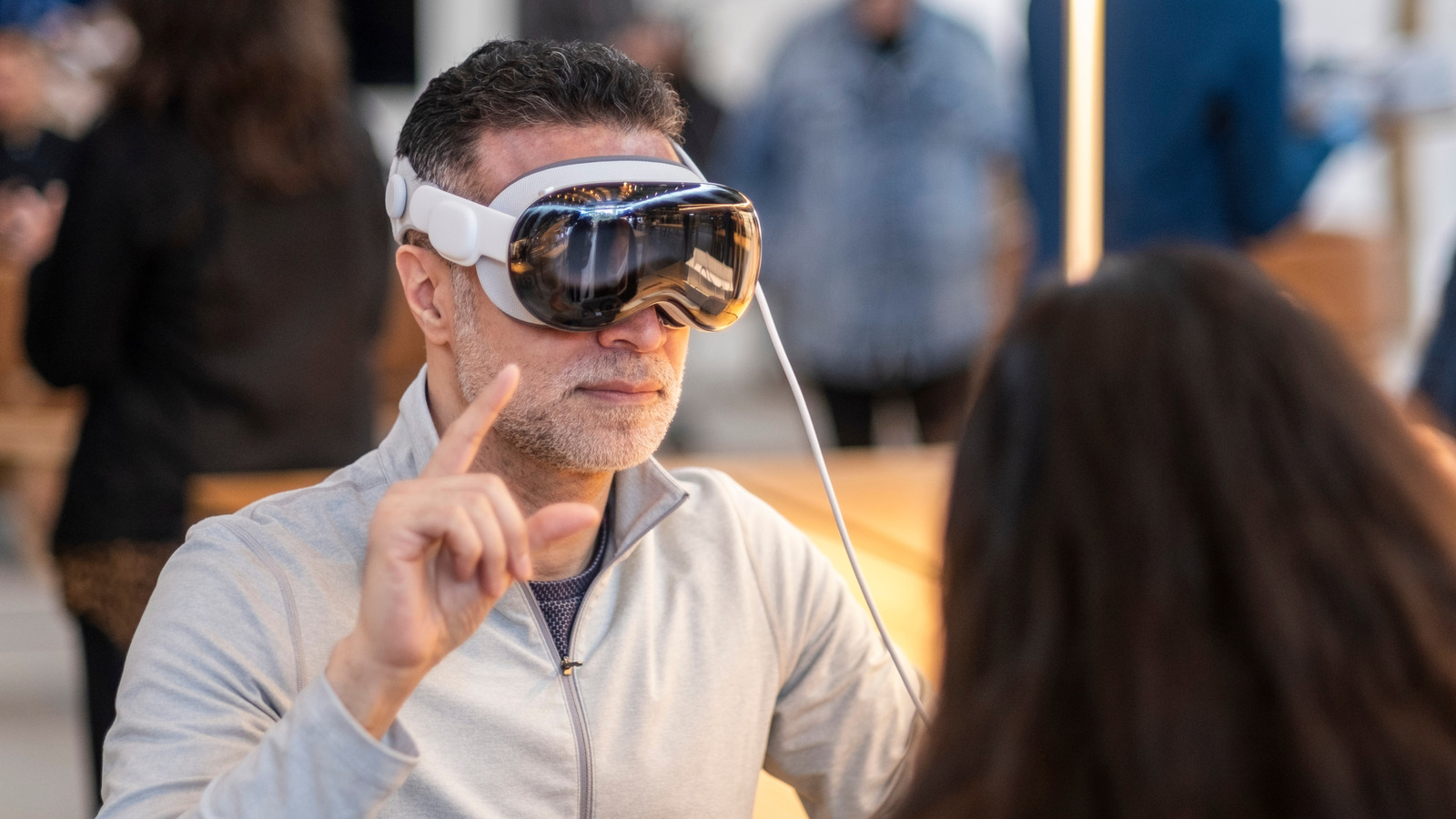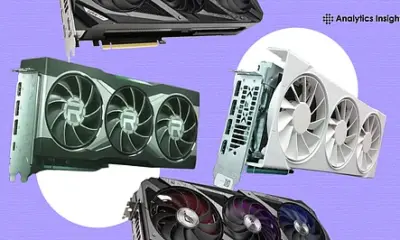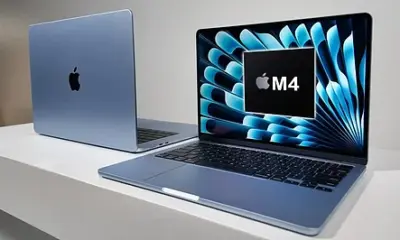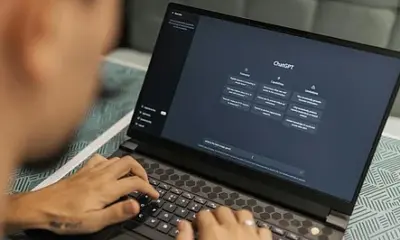Technology
Discover the Unexpected Benefits of Spatial Computing Technology

Virtual and augmented reality technology, commonly referred to as spatial computing, is rapidly evolving beyond its initial gaming applications. While Google introduced Google Cardboard in March 2014, marking a significant step towards mainstream VR, the technology largely remained a novelty until recent advancements made it more accessible and practical. Today, companies like Meta and Apple are at the forefront, showcasing the potential of spatial computing in various fields, from healthcare to education and remote work.
Transforming Collaboration and Productivity
One of the most significant advantages of spatial computing is its ability to enhance collaboration among remote teams. With the rise of remote work during the pandemic, many organizations faced challenges in coordinating effectively. Spatial computing addresses these issues by enabling teams to interact in shared virtual environments, regardless of their physical locations.
Using augmented and virtual reality headsets, colleagues can visualize 3D models, annotate documents, and brainstorm in real-time, creating a more engaging experience compared to traditional video conferencing. For instance, architects and engineers can utilize platforms like Microsoft Mesh to explore virtual building models, allowing them to identify design flaws and optimize layouts before construction begins. This approach not only saves time but also conserves resources, making it an attractive option for various industries.
Revolutionizing Medical Training
The medical field is witnessing a transformation through the integration of spatial computing. Budding doctors and medical students require extensive training, typically conducted on cadavers, which can be uncomfortable and ethically challenging. Advances in VR technology now allow students to practice surgical procedures through highly realistic simulations. Platforms like Osso VR enable medical trainees to perform intricate surgeries using 3D anatomical models, complete with haptic feedback that mimics real tissue and bone.
This immersive training method allows students to refine their skills and gain confidence, reducing the chances of error when they transition to real-life procedures. Furthermore, augmented reality can overlay critical information, such as MRI scans, directly onto a patient’s body during surgery, enhancing the accuracy of medical interventions.
Enhancing Technical Training and Safety
Spatial computing also plays a pivotal role in technical training across various industries. Maintaining and repairing machinery often requires extensive experience, which can be challenging to acquire. By using AR glasses, technicians can access interactive simulations that provide step-by-step guidance for complex tasks. This technology not only aids in training new technicians but also allows experienced workers to operate high-risk equipment in a safe environment, minimizing accidents.
Virtual reality platforms enable workers to train in simulated environments, such as offshore oil rigs or wind turbines, without the inherent risks of real-world settings. The ability to receive real-time assistance from experts via AR further enhances safety and efficiency in sectors like aerospace, manufacturing, and construction.
Transforming Education with Immersive Learning
Education is another area poised for disruption through spatial computing. Traditional teaching methods often struggle to engage students fully. With VR and AR, educators can create interactive and immersive learning experiences that resonate with students. For example, learners can explore historical events as if they were part of them, deepening their understanding and connection to the material.
Additionally, AR can enhance classroom experiences by overlaying interactive elements, such as 3D molecular structures in chemistry or virtual dissections in biology. This approach allows for personalized learning, as students can engage with content at their own pace. Language education can also benefit, as VR can simulate cultural environments, providing students with opportunities to practice conversational skills with native speakers.
Streamlining Navigation and Everyday Applications
Beyond specialized fields, spatial computing offers practical benefits in everyday life. Navigation apps, like Google Maps, provide essential direction, but AR technology can enhance this experience significantly. Imagine using AR glasses that project real-time directions directly onto the street in front of you, eliminating the need to glance at a smartphone screen.
This innovation is not only more convenient but also safer, allowing users to remain focused on their surroundings. Features like AR Live View in Google Maps demonstrate this potential by projecting walking directions in crowded areas. Indoor navigation in places like airports and malls can also become more intuitive with AR overlays guiding users to their destinations.
The applications of spatial computing are vast, extending from enhancing remote work to revolutionizing healthcare and education. As technology continues to advance, its integration into various sectors will likely create new opportunities and improve efficiency across the board.
-

 Technology5 months ago
Technology5 months agoDiscover the Top 10 Calorie Counting Apps of 2025
-

 Health2 months ago
Health2 months agoBella Hadid Shares Health Update After Treatment for Lyme Disease
-

 Health3 months ago
Health3 months agoErin Bates Shares Recovery Update Following Sepsis Complications
-

 Technology4 months ago
Technology4 months agoDiscover How to Reverse Image Search Using ChatGPT Effortlessly
-

 Technology1 month ago
Technology1 month agoDiscover 2025’s Top GPUs for Exceptional 4K Gaming Performance
-

 Technology2 months ago
Technology2 months agoElectric Moto Influencer Surronster Arrested in Tijuana
-

 Technology5 months ago
Technology5 months agoMeta Initiates $60B AI Data Center Expansion, Starting in Ohio
-

 Technology5 months ago
Technology5 months agoRecovering a Suspended TikTok Account: A Step-by-Step Guide
-

 Health4 months ago
Health4 months agoTested: Rab Firewall Mountain Jacket Survives Harsh Conditions
-

 Lifestyle5 months ago
Lifestyle5 months agoBelton Family Reunites After Daughter Survives Hill Country Floods
-

 Technology4 months ago
Technology4 months agoHarmonic Launches AI Chatbot App to Transform Mathematical Reasoning
-

 Technology3 months ago
Technology3 months agoUncovering the Top Five Most Challenging Motorcycles to Ride





















